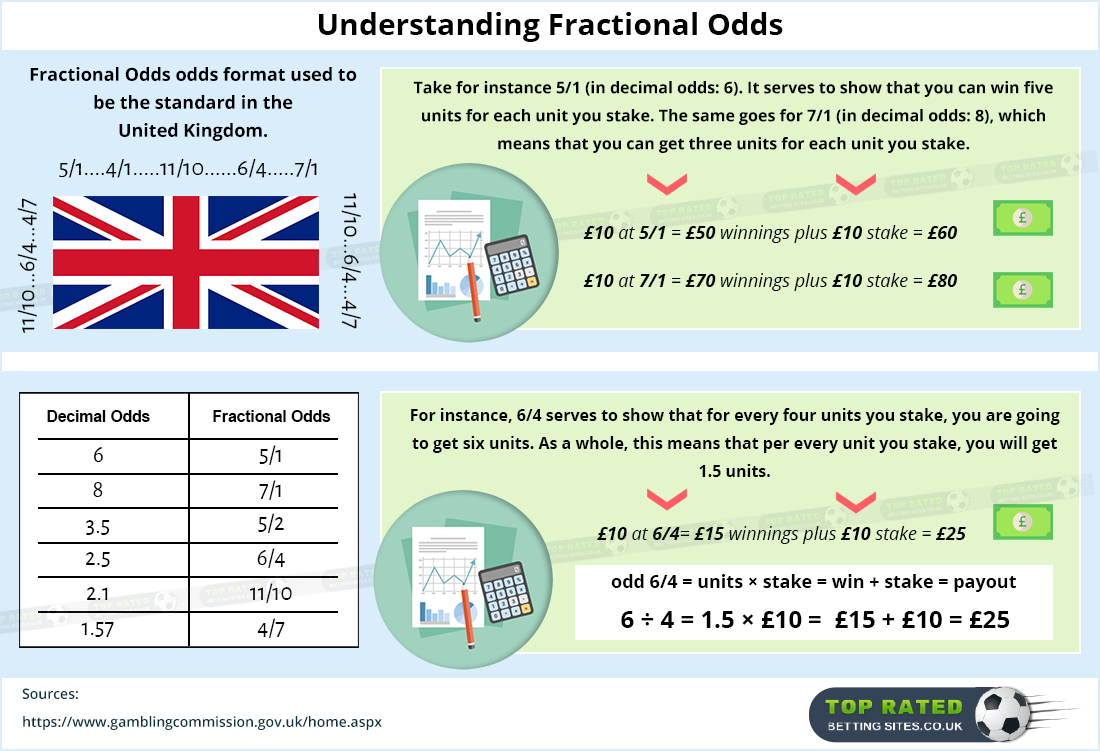Understanding Gambling Odds
Buchdal’s book “fixed-Odds Sports Betting” is considered one of the best books about gambling. It holds wit and wisdom for the newbie and the experienced bettor alike. He emphasizes the practice of value betting, where you need to isolate that thing that is likely to happen, but oddsmakers are not favoring it to happen. The over/under betting odds, or the totals, work differently for each sport. If the number is 42 in a football game and you bet the over, you would need 43 points total between the two teams. In baseball betting, it is the number of runs scored that sets the total.
- Understanding Gambling Odds
- Gambling Odds Explained
- Betting Odds Explained - A Beginner's Guide To Gambling
Dec 07, 2020 Decimal odds represents the amount that is won for every $1 that is wagered. For instance, if the odds are 3.00 that a certain horse wins, the payout is $300 for every $100 wagered. This is when odds are displayed as a fraction. For example, when you see 4/1 you can calculate the odds by completing the following equation: 1 / (4+1) = 0.20, which translates into a 20% chance of the proposed outcome. Decimals: Alternatively, betting odds can also be viewed in terms of decimals instead of fractions. This is the horse most likely to win, which is reflected in having the shortest price displayed with betting operators. You will see an F alongside the horse’s odds when they are the favourite. If more than one horse has the same odds of winning according to the betting market, this will be displayed as JF, meaning joint-favourite.
Below are the three main formats used for expressing betting odds.
- Decimal
- Moneyline (or American)
- Fractional
Most likely, you’ll come across all of these formats when playing online. Some sites let you choose your format, but some don’t. This is why knowing all of them is extremely beneficial.
This is the format most commonly used by betting sites, with the possible exception of sites that have a predominantly American customer base. This is probably because it is the simplest of the three formats. Decimal odds, which are usually displayed using two decimal places, show exactly how much a winning wager will return per unit staked.
Here are some examples. Remember, the total return includes the initial stake.

The calculation required to work out the potential return when using decimal odds is very simple.

In order to work out the potential profit just subtract one from the odds.
Using the decimal format is as easy as that, which is why most betting sites stick with it. Note that 2.00 is the equivalent of even money. Anything higher than 2.00 is odds against, and anything lower is odds on.
Moneyline/American
Moneyline odds, also known as American odds, are used primarily in the United States. Yes, the United States always has to be different. Surprise, surprise. This format of odds is a little more complicated to understand, but you’ll catch on in no time.
Moneyline odds can be either positive (the relevant number will be preceded by a + sign) or negative (the relevant number will be preceded by a – sign).

Positive moneyline odds show how much profit a winning bet of $100 would make. So if you saw odds of +150 you would know that a $100 wager could win you $150. In addition to that, you’d also get your stake back, for a total return of $250. Here are some more examples, showing the total potential return.
Negative moneyline odds show how much you need to bet to make a $100 profit. So if you saw odds of -120 you would know that a wager of $120 could win you $100. Again you would get your stake back, for a total return of $220. To further clarify this concept, look at these additional examples.
The easiest way to calculate potential returns from moneyline odds is to use the following formula when they are positive.
If you want to know the total potential return, simply add your stake to the result.
For negative moneyline odds, the following formula is required.
Again, simply add your stake to the result for the total potential return.
Understanding Gambling Odds
Note: the equivalent of even money in this format is +100. When a wager is odds against, positive numbers are used. When a wager is odds on, negative numbers are used.
Gambling Odds Explained
Fractional odds are most commonly used in the United Kingdom, where they are used by bookmaking shops and on course bookies at horse racing tracks. This format is slowly being replaced by the decimal format though.

Here are some simple examples of fractional odds.
- 2/1 (which is said to as two to one)
- 10/1 (ten to one)
- 10/1 (ten to one)
And now some slightly more complicated examples.
- 7/4 (seven to four)
- 5/2 (five to two)
- 15/8 (fifteen to eight)

These examples are all odds against. The following are some examples of odds on.
- 1/2 (two to one on)
- 10/11 (eleven to ten on)
- 4/6 (six to four on)
Betting Odds Explained - A Beginner's Guide To Gambling
Note that even money is technically expressed as 1/1, but is typically referred to simply as “evens.”
Working out returns can be overwhelming at first, but don’t worry. You WILL master this process with enough practice. Each fraction shows how much profit you stand to make on a winning wager, but it’s up to you to add in your initial stake.
The following calculation is used, where “a” is the first number in the fraction and “b” is the second.
Some people prefer to convert fractional odds into decimal odds before calculating payouts. To do this you just divide the first number by the second number and add one. So 5/2 in decimal odds would be 3.5,6/1 would be 7.0 and so on.